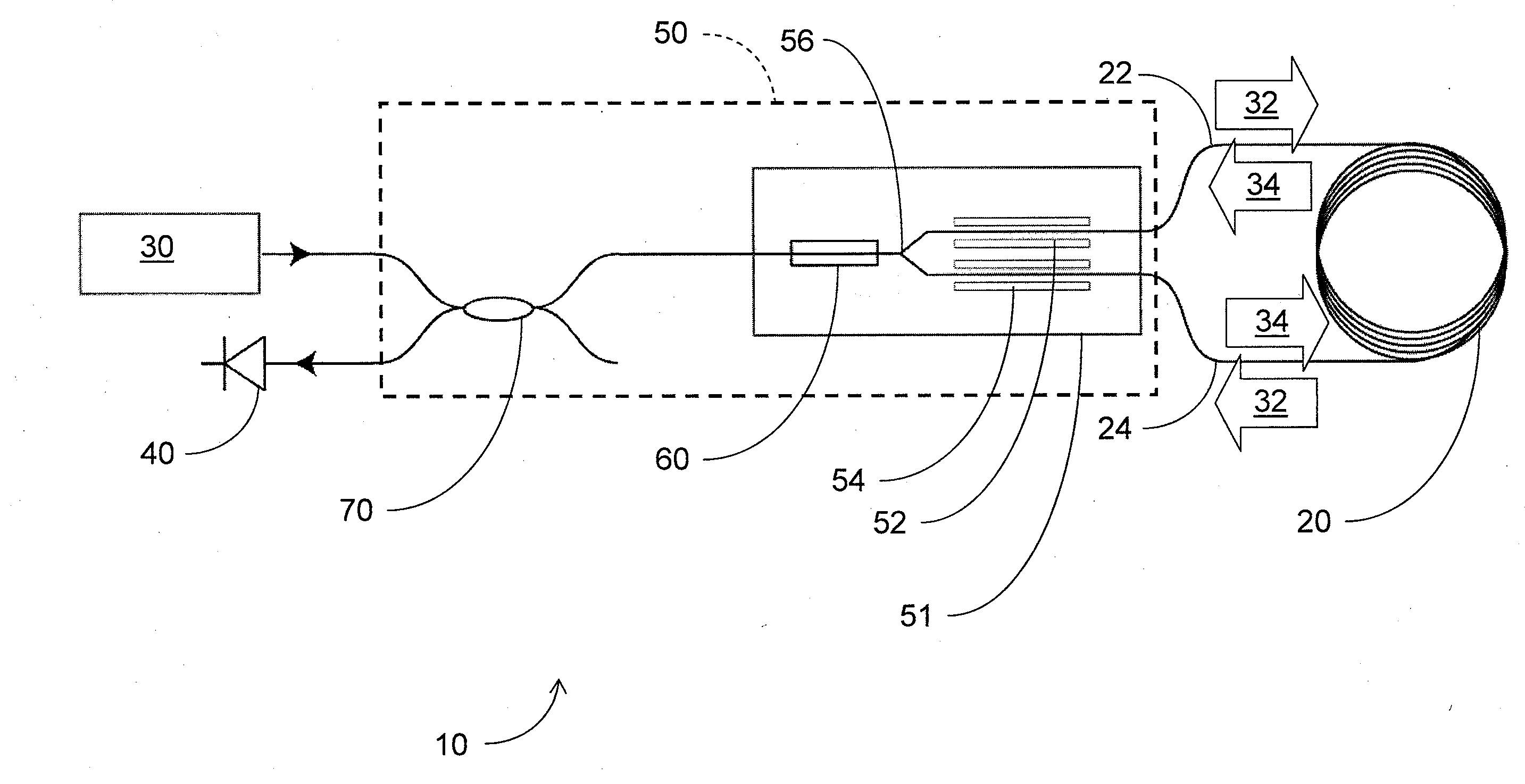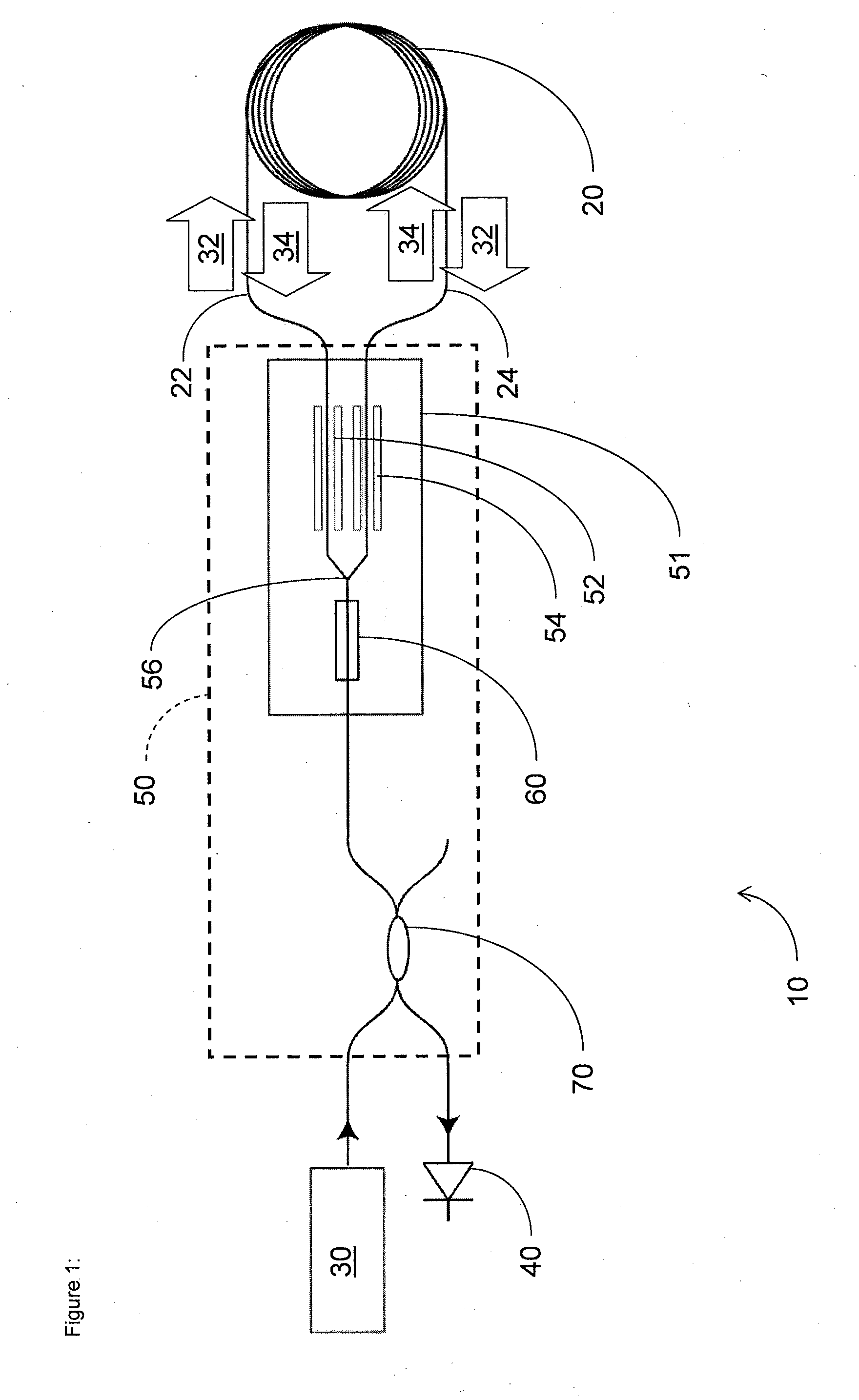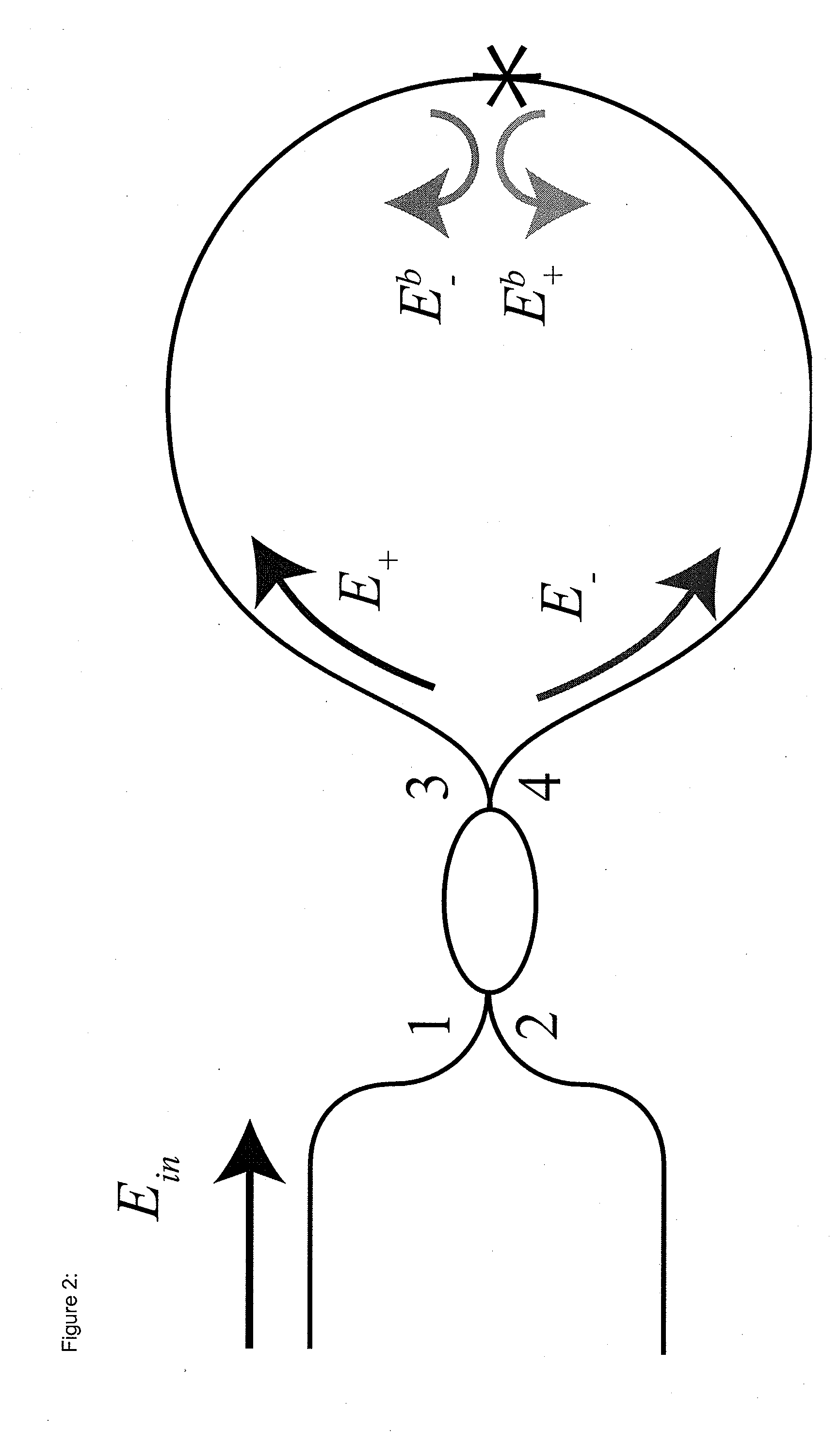Laser-driven optical gyroscope with push-pull modulation
a push-pull modulation, optical gyroscope technology, applied in the direction of speed measurement using gyroscopic effects, instruments, surveying and navigation, etc., can solve the problems of broadband source introduction, parasitic errors, and limit the performance of laser-driven fog far above inertial navigation requirements, so as to reduce coherent backscattering-induced errors
- Summary
- Abstract
- Description
- Claims
- Application Information
AI Technical Summary
Benefits of technology
Problems solved by technology
Method used
Image
Examples
Embodiment Construction
[0021]Based on insights from a new model of scattering in optical gyroscopes, such as fiber optic gyroscopes (FOGs), using high-coherence sources (e.g., laser sources with linewidths less than 108 Hz or less than 1011 Hz), certain embodiments described herein provide an optical gyroscope driven with a laser of suitable linewidth advantageously exhibits short and long-term performance matching and / or exceed that of the same optical gyroscope driven by a broadband source (e.g., source with bandwidth greater than 1011 Hz). In certain embodiments, the optical gyroscope can be combined with the use of a hollow-core fiber in the sensor coil to produce new optical gyroscopes exceeding current standards.
[0022]A laser has two major advantages over broadband sources. Because a semiconductor laser around 1.5 μm has an excellent wavelength stability (typically <1 part per million (ppm)), the issue of scale factor stability would be resolved. A laser also has negligible excess noise compared to ...
PUM
 Login to View More
Login to View More Abstract
Description
Claims
Application Information
 Login to View More
Login to View More - R&D
- Intellectual Property
- Life Sciences
- Materials
- Tech Scout
- Unparalleled Data Quality
- Higher Quality Content
- 60% Fewer Hallucinations
Browse by: Latest US Patents, China's latest patents, Technical Efficacy Thesaurus, Application Domain, Technology Topic, Popular Technical Reports.
© 2025 PatSnap. All rights reserved.Legal|Privacy policy|Modern Slavery Act Transparency Statement|Sitemap|About US| Contact US: help@patsnap.com



